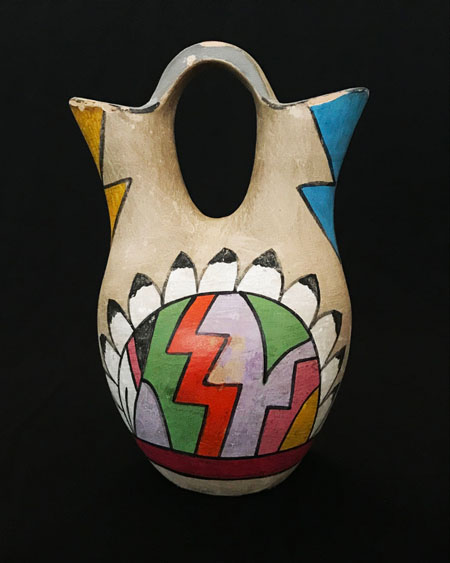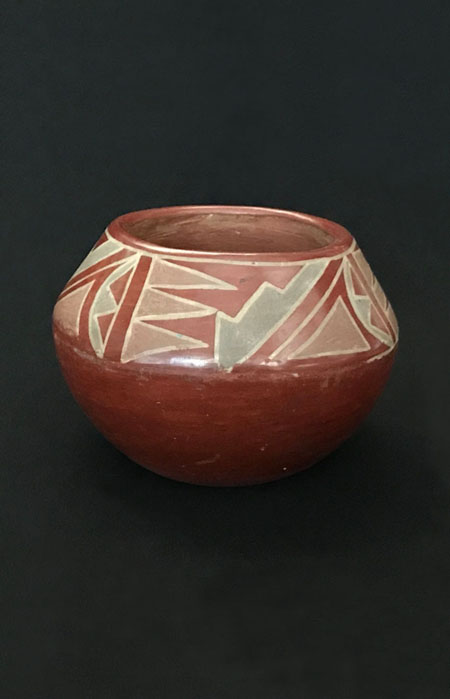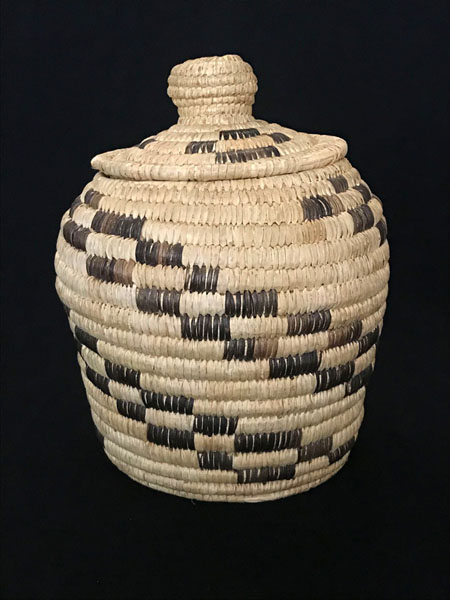One copy of the Southwest Indian Crafts is available for checkout. This artifact kit contains four examples of Southwest Indian crafts. These artifacts have been carefully select to be used to create lesson plans to expose students to primary resources. Artifacts can be used to show students how to observe and analyze objects for understanding more about the past. Below are some images and information about the artifacts.
Puebloan Pottery
Studying pottery reveals scientific processes, traditional world view, and adaptable socioeconomic processes of the people who made them. Puebloan pottery is a technical skill developed over hundreds of years. Two main periods of ceramic production are noted in scholarship: ancient production from 1000-1250 C.E. and modern production from the late 19th century to present day.
The details of pottery production varies from village to village, which speaks to the technical know-how necessary for production of southwestern pottery. For the majority of potters, prayer precedes any part of the production, as one must ask Mother Earth, "Clay Woman," for use of her clay. Selection of clay is crucial as it determines the rest of the decisions during production, such as tempering material, method of working the clay, and firing. Traditionally, women have been the only artists and collectors of clay. This restriction however has changed during contemporary times, as demands for ceramics far exceeded supply. During the 1920s men began to be part of production, lending a steady hand to the painting of vessels. Presently, men have become puebloan ceramic artists in their own right.


Handmade Tohono O'odham (Papago) Basket
Basketry among the O’odham peoples utilize the plant material of the Sonoran desert, including willow and cotton root which are the main components for the body and black devil’s claw and red yucca root for decorative elements. Baskets made prior to the 1900s differ significantly from those made after the turn of the 20th century, due in part to environmental factors as well as shifts in economy. Prior to 1900 baskets were primarily composed of willow, a riparian plant. After 1900 the O'odham turned to yucca leaves, a desert plant, for material. This suggests less availability of willow, which may be due to a reduction or even decimation of riparian habitats. Many O’odham designs are similar to that of the Apache peoples. These designs “include stars, interlocking geometric forms, maze, and human and animal figures” (Berlo and Phillips 2015:80). For at least the last hundred years, basket production has primarily been for the commodity/utilitarian market although some are still produced for ritual use. O'odham basketry is still practiced today.

Sources: Berlo Janet Catherine and Ruth B. Phillips. 2015. Native North American Art. Oxford: Oxford University Press.
